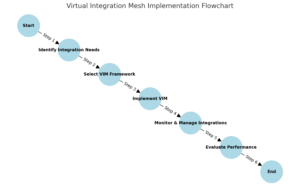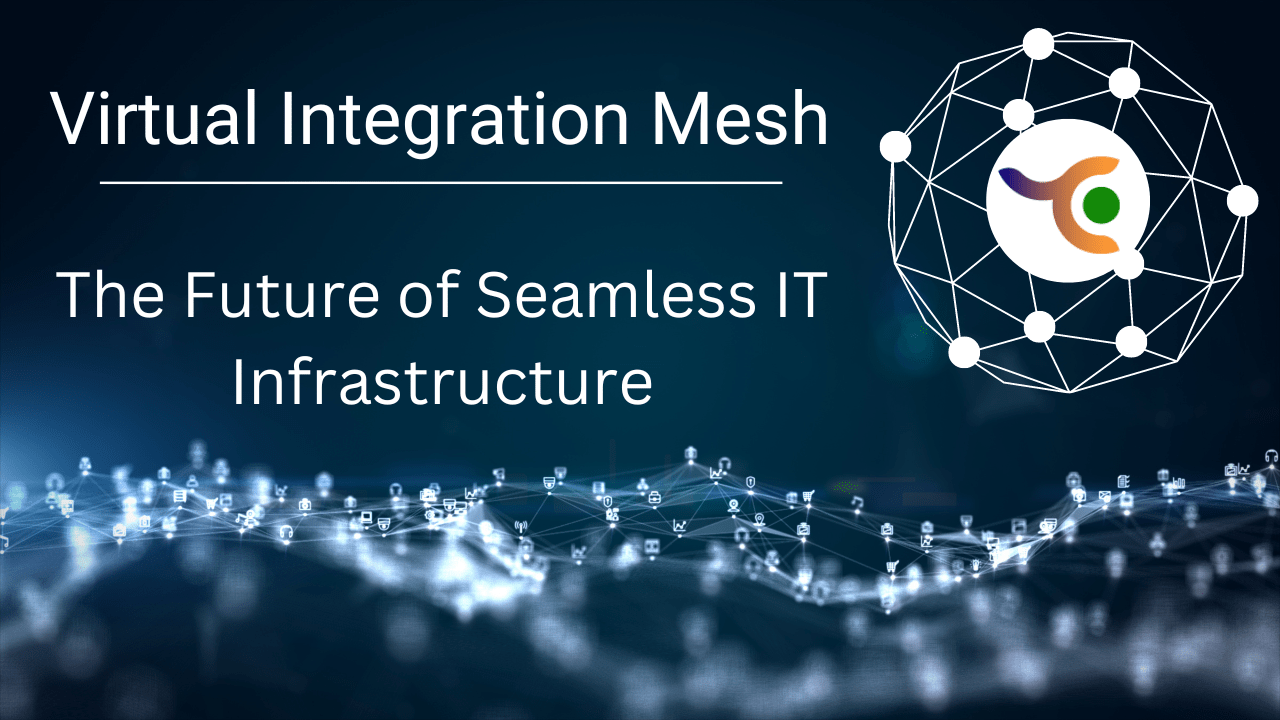In today’s fast-paced digital era, organizations constantly seek ways to improve the customer experience. A key aspect is to ensure that the IT infrastructure is robust, flexible, and capable of integrating diverse applications and services. The need has given rise to the Virtual Integration Mesh (VIM), a modernized strategy for businesses to manage their IT ecosystems better and serve their customers. Let’s explore how Virtual Infrastructure Mesh (VIM) can elevate the customer experience by providing a smooth, efficient, and responsive IT ecosystem.
What is a Virtual Integration Mesh?
A Virtual Integration Mesh is an integration framework that enables communication, among different systems, applications, and services within an IT environment. In contrast to integration approaches that depend on fixed connections, VIM utilizes a flexible interconnected structure that makes use of modern technologies such as microservices, containerization, and service meshes.
How Does Virtual Integration Mesh Enhance the Customer Experience?
- Faster Response Times – Virtual Integration Mesh (VIM) ensures customer requests are processed quickly and efficiently by optimizing the communication between services. The API gateway routes client requests to the appropriate services within the mesh, reducing latency, enhancing the speed of transactions, and enabling faster response times with assurance that customers experience minimal delays.
- Seamless Service Integration – Nowadays, customers demand a cohesive experience across various services and touchpoints. Businesses can effortlessly integrate new services and applications with Virtual Integration Mesh (VIM), ensuring that customers receive a unified experience across all platforms and devices. Whether it’s a mobile app, a website, or an in-store system, the integration framework ensures that all components work together smoothly.
- Personalized Customer Experiences – Virtual Integration Mesh facilitates data integration from various sources, enabling businesses to gain a comprehensive view of their customers. This holistic view enables personalized experiences, such as customized offers, tailored recommendations, and personalized communication. By understanding customer preferences and behavior, businesses can deliver experiences that resonate on an individual level.
- Enhanced Reliability and Availability – Downtime and service interruptions can severely impact customer satisfaction. The distributed nature of VIM enhances system resilience, ensuring high availability and fault tolerance. If one service fails, others can continue to operate without disruption, minimizing the impact on customers. This reliability builds trust and ensures that customers can rely on the services provided.
- Improved Security – Security is a top concern for customers, especially when it comes to their personal and financial information. VIM’s robust security layer includes identity management, access control, encryption, and compliance monitoring. This comprehensive approach to security ensures that customer data is protected, fostering a sense of safety and trust.
- Monitoring and Observability – Robust monitoring and observability tools provide real-time insights into system health, performance metrics, and logs. This facilitates proactive issue resolution, ensuring that any potential problems are addressed before they impact the customer.
Virtual Integration Mesh Step-By-Step Guide
Here’s the step-by-step guide to implementing a Virtual Integration Mesh, ensuring that each critical aspect is addressed to achieve a successful integration strategy.

- Identify Integration Needs – The first step is to determine the unique integration requirements of your business, including applications, systems, and data sources that need to be connected.
- Select the VIM Framework – Select the appropriate VIM framework that aligns with your business needs, based on factors like flexibility, scalability, and compatibility with existing systems.
- VIM implementation – It involves deploying the selected framework, configuring integration points, and assembling the required parts. Monitor & Manage Integrations – Monitor the integrations continuously to ensure correct functioning, and manage issues to maintain seamless operations that may arise.
- Evaluate Performance – The last step involves assessing the performance of the VIM implementation via metrics like integration reliability, speed, and overall system efficiency.
Key Components of a Virtual Integration Mesh
- Service Mesh: At the core of a VIM is the service mesh, a dedicated infrastructure layer that handles service-to-service communication. It provides crucial capabilities such as load balancing, service discovery, and failure recovery, all of which contribute to a smoother customer experience.
- API Gateway: The API gateway acts as a single entry point for all client requests, ensuring that they are efficiently routed to the appropriate services within the mesh. It also performs essential functions such as authentication, rate limiting, and request/response transformation, enhancing the overall customer experience.
- Event Bus: An event bus facilitates asynchronous communication between services by publishing and subscribing to events. This decouples the services, allowing them to operate independently and react to events in real-time, improving the responsiveness and adaptability of customer-facing applications.
- Data Integration Layer: This layer handles the extraction, transformation, and loading (ETL) of data between different systems. By ensuring that data flows smoothly across the mesh, it maintains consistency and integrity, providing accurate and timely information to customers.
- Security Layer: The security layer encompasses identity management, access control, encryption, and compliance monitoring to safeguard customer data. This ensures that all interactions are secure, protects sensitive information, and builds customer trust.
Use Cases of Virtual Integration Mesh
- E-commerce Platforms – For e-commerce platforms, VIM ensures that all services, from payment processing to inventory management, are seamlessly integrated. This provides customers with a smooth and reliable shopping experience, reducing cart abandonment rates and increasing satisfaction.
- Hospitality – In the hotel industry, the Virtual Integration Mesh (VIM) links digital platforms for streamlined operations and improved customer experiences. Better personalization and efficiency of this industry are achieved by centralizing data, integrating booking systems using communication tools, and automating processes.
- Financial Services – In the financial sector, VIM can integrate various banking services, ensuring that customers have quick and secure access to their accounts, transactions, and support. The enhanced security features also protect sensitive financial data, building customer confidence.
- Healthcare Systems – Healthcare services providers can use VIM to integrate patient records, appointment scheduling, and telehealth services. This ensures that patients receive coordinated and timely care, improving health outcomes and patient satisfaction.
- Telecommunications –Telecommunications service companies can leverage VIM to integrate customer service platforms, billing systems, and network management tools. This ensures that customers receive prompt support and accurate billing, enhancing their overall experience.
Conclusion
A Virtual Integration Mesh represents a significant leap forward in enhancing customer experience through seamless IT infrastructure. By providing a scalable, flexible, and secure integration framework, Virtual Integration Mesh enables businesses to deliver faster, more reliable, and personalized services. This not only meets but exceeds customer expectations, driving satisfaction and loyalty in an increasingly competitive market.
As technology continues to evolve, adopting a Virtual Integration Mesh can be a boom for businesses wanting to better serve their customers, foster stronger relationships, and achieve long-term success. Embrace the future of IT integration with VIM and transform your customer experience today.


